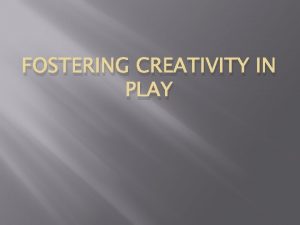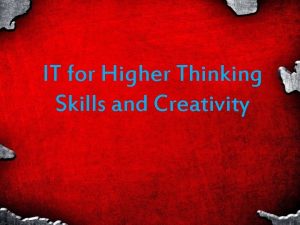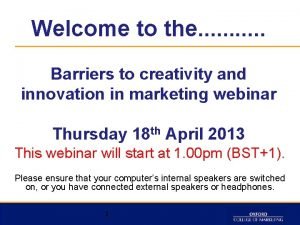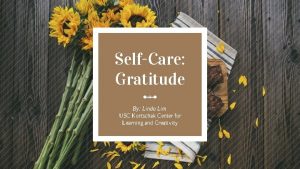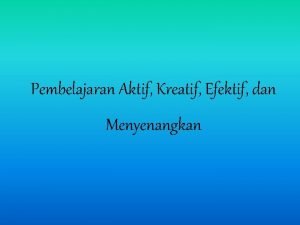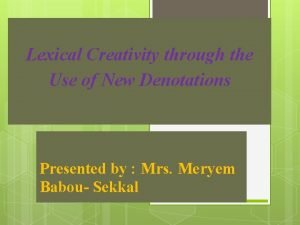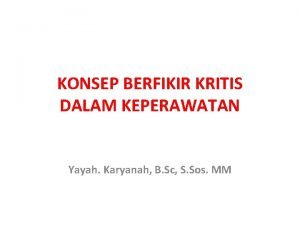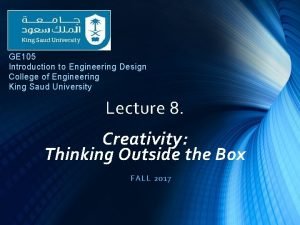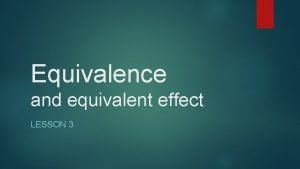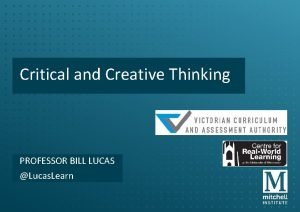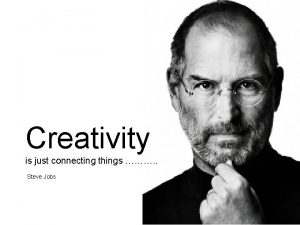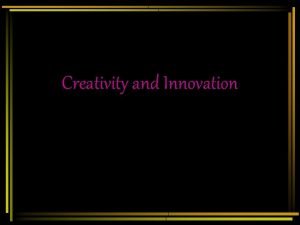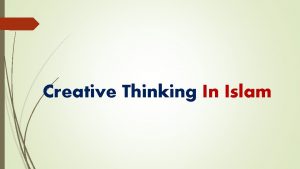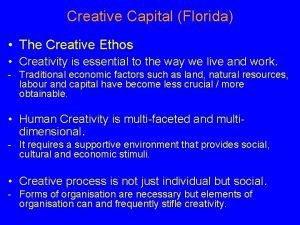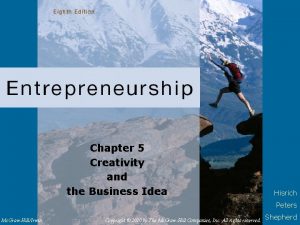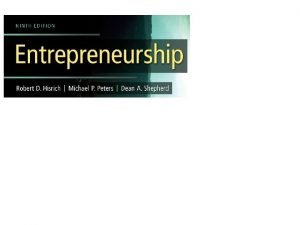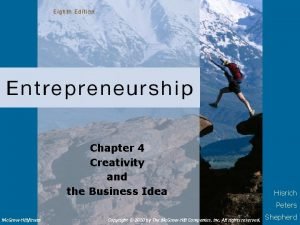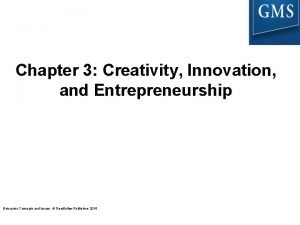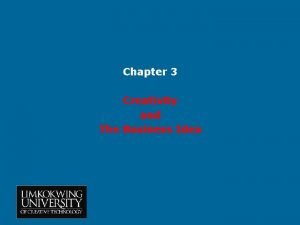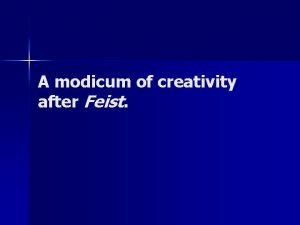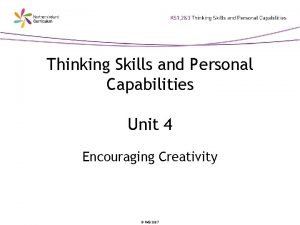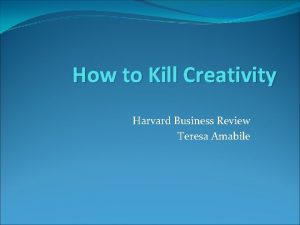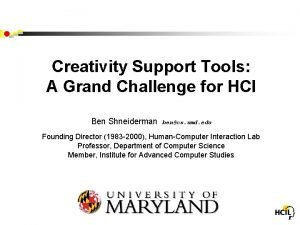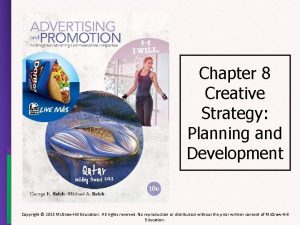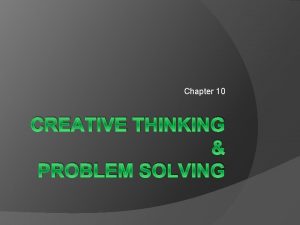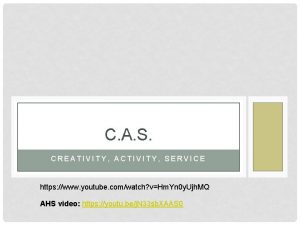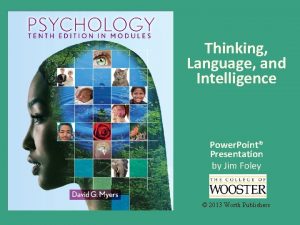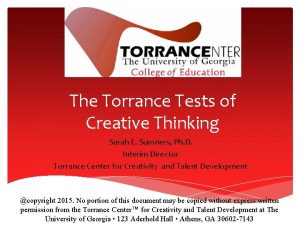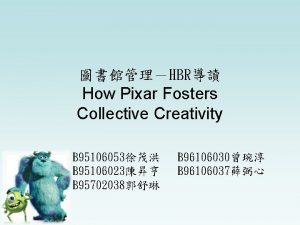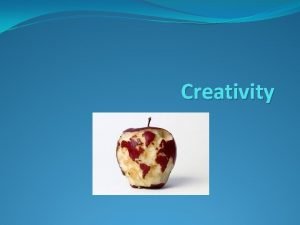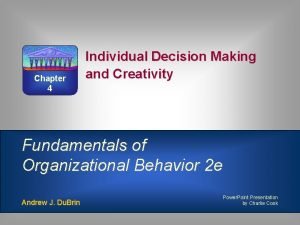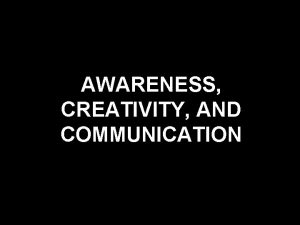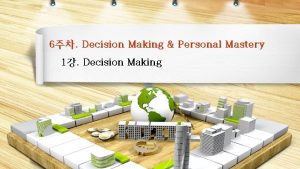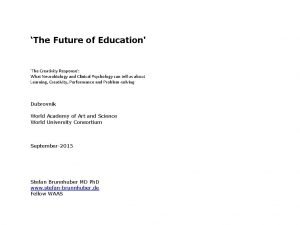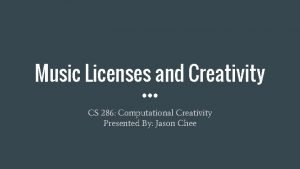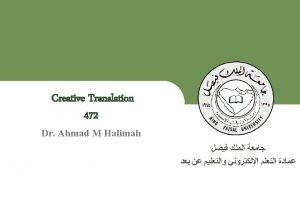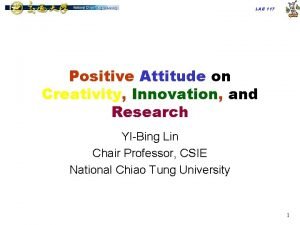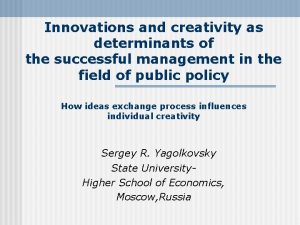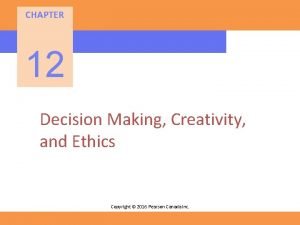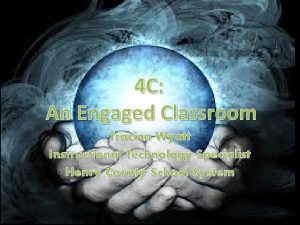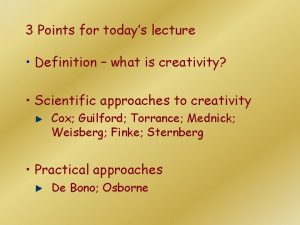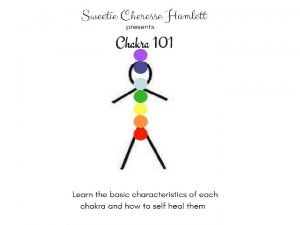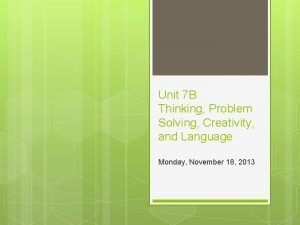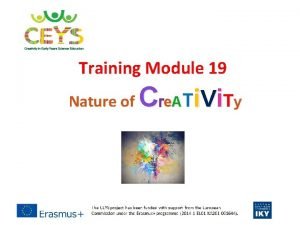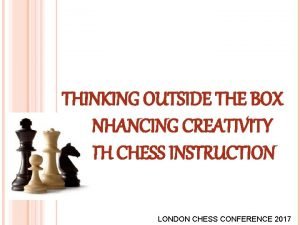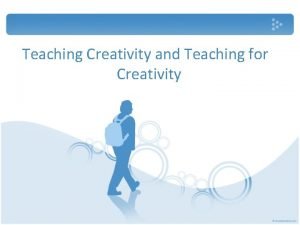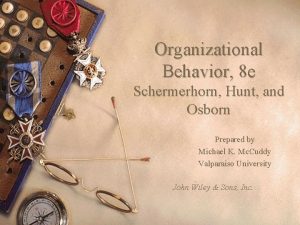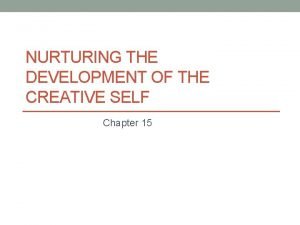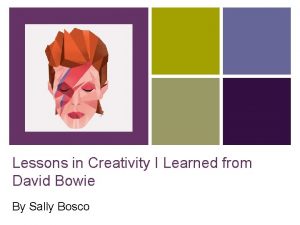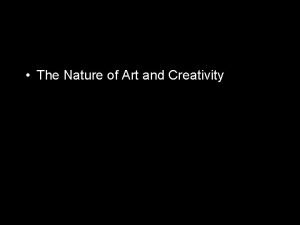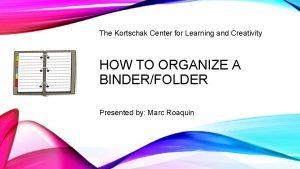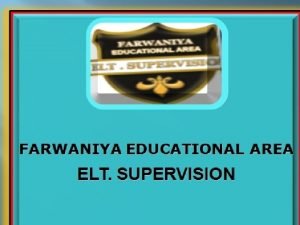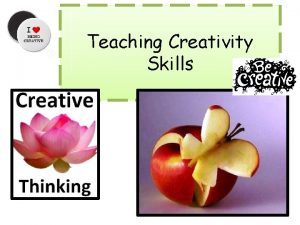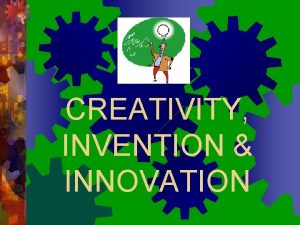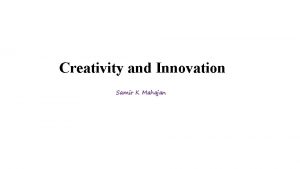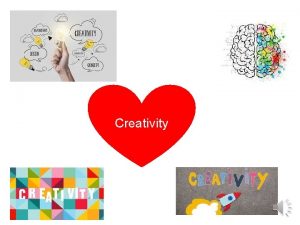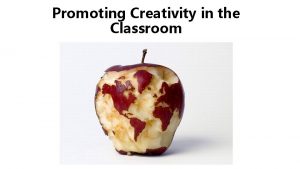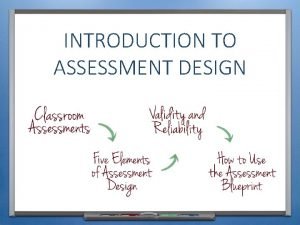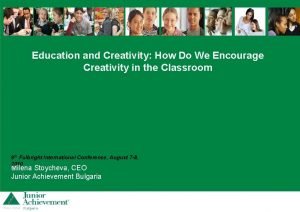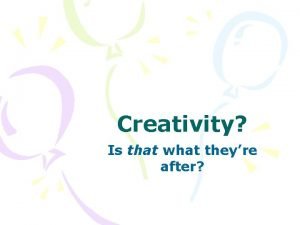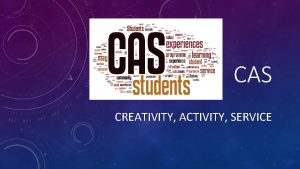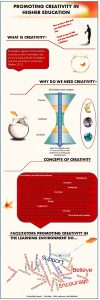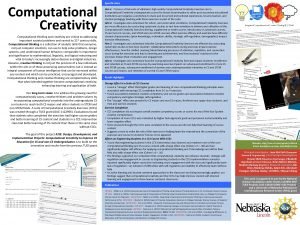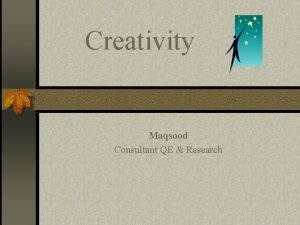Teaching Creativity Skills Introduction To Teaching Skills Purpose
































































- Slides: 64

Teaching Creativity Skills

Introduction To Teaching Skills Purpose • To Explore the different learning and teaching styles and teachable moments conducive for Pathfinders and Adventurers physical, mental, social and spiritual development Objectives • To discover the importance and value of creative approaches to teaching and to learn ways of developing one’s own creative style of teaching

What is Creativity? Find the answers - Activity 1 First team back gets a reward! • In 2’s or 3’s • Find the 5 different colour cards hidden in the room.

What is Creativity? 1. Creativity is the act of turning new and imaginative ideas into reality. 2. Creativity is characterised by the ability to perceive the world in new ways, to find hidden patterns, to make connections between seemingly unrelated phenomena, and to generate solutions. 3. Creativity involves two processes: thinking, then producing. If you have ideas, but don’t act on them, you are imaginative but not creative. 5. Mental Characteristic that allows a person to think outside of the box, which results in innovative or different approaches to a particular task. 4. In order to be creative, you need to be able to view things in new ways or from a different perspective


Understanding Creativity Purpose • The reason for which something is done/exists • An intended or desired Result/Goal/Aim/End Value • The - importance - worth - usefulness of something

Activity 2 Ø Under the chairs you will find an envelope Ø Discuss the statement with small group 3’s or 4’s Ø Place the statement under the Purpose or Value heading on the wall

It makes learning more enjoyable , lasting and meaningful • It approaches opportunity of self‐expression and development of creativity • It instills pride in accomplishment and build self confidence • It contributes to the development of proper self concepts �� It provides for participation in groups situation and reaction to established group approval and behaviour �� Its deepens a Pathfinder’s need for individual expression. �� Its relieves period of physical restlessness with meaningful activity, coordination mind and muscle. �� it promotes respect for both adults and peer relationship �� It afford opportunity to practice principles of Christian living. • Helps the Pathfinder respect property of others • Teaches cooperation, sharing and taking turns. • Emphasise a Bible concept or illustrate a truth • Provide opportunity for the Pathfinder to express his/her relationship with God and a response to Bible teaching

1. Conchology is the A. B. C. D. Study of trees Study of shells Study of measurements Study of People B. Study of shells

2. Geology is the A. B. C. D. E. Study of trees Study of caves Study of shells Study of books Study of the earth E. Study of the earth

3. Theology is the A. B. C. D. Study of words Study of the Bible Study of God Study of computers C. Study of God

4. Paleontology is the A. B. C. D. E. Study of prehistoric life Study of cells Study of rocks & minerals Study of shrubs Study of marine invertebrates A. Study of prehistoric life

5. Herpetology is the A. B. C. D. E. Study of herbs Study of small mammals Study of lichens Study of reptiles Study of God D. Study of reptiles

6. Metrology is the A. Study of meteors B. Study of measurements C. Study of heavenly bodies D. Study of cells E. Study of music scores B. Study of measurements

7. Lithology is the A. Study of emotions B. Study of insects C. Study of fruit growing D. Study of rocks E. Study of prehistoric life D. Study of rocks

8. Cetology is the A. B. C. D. E. Study of whales Study of insects Study of dogs Study of cacti Study of seeds A. Study of whales

9. Cytology is the A. B. C. D. E. Study of cats Study of cacti Study of the internet Study of human life Study of cells E. Study of cells

10. Dendrology is the A. B. C. D. Study of trees Study of orchids Study of stars Study of environmental conservation A. Study of trees

11. Agrology is the A. B. C. D. E. Study of microscopic plant life Study of basket making Study of lichens Study of mushrooms Study of soil for crops E. Study of soil for crops

12. Speleology is the A. B. C. D. E. Study of caves Study of soil for crops Study of modern communications Study of the Northern Lights Study of stars A. Study of caves

13. Pomology is the A. Study of God's creation B. Study of fruit growing C. Study of Tree rings D. Study of human origins B. Study of fruit growing

14. Oology is the A. B. C. D. Study of birds eggs Study of zoo life Study of small mammal pets Study of fish raising A. Study of birds eggs

15. Mycology is the A. B. C. D. E. Study of words Study of microscopic life Study of tropical fish Study of fungi Study of cells D. Study of fungi

Steps to being creative Step one: Become a knowledgeable teacher Step two: Connect with other teachers/trainers Step three: Become a collector of teaching/training ideas Step four: Share your learning Step five: Remove the blocks to creative thinking Step six: Practise your creativity

What can you see?

We Gain Knowledge about God, the world and ourselves Visiting places Being involved with people Taking part in events and activities Reading Discussions Talks Audio Visuals

Creative Tools for Effective Teaching: Aim of Lesson Learning atmosphere Teaching aids Use a variety of creative resources Story telling Be creative Finding things Treasure hunt Singing Questions Puzzles Discussions Demonstrations Mime Drama Role play Debates Quiz

How many additional birds can you find? Answer: Ten birds

Activity Different Learning Styles

Each Pathfinder/Adventurer Learns Differently Discover how your Pathfinder/Adventurer learns best and you will discover the best way to keep their attention

Teaching the Pathfinder/Adventurer Curriculum Creatively - You must know/study the Curriculum - Assess the number and needs of your class - Work out your teaching plan - Available resources Plan your work and Work your plan

Teaching Task q Divide into groups of 4 -6 q As a group, choose one requirement from either the Pathfinder or Adventurer coursework, Award or Honour and decide how you would best teach it q Create a teaching plan o Lesson Objective o Success Criteria o Basic 3 part lesson (Intro/Main/Plenary) o Assessment?

Thank You Any Questions?


1. When I operate new equipment I generally: a) read the instructions first b) listen to an explanation from someone who has used it before c) go ahead and have a go, I can figure it out as I use it 2. When I need directions for travelling I usually: a) look at a map b) ask for spoken directions c) follow my nose and maybe use a compass 3. When I cook a new dish, I like to: a) follow a written recipe b) call a friend for an explanation c) follow my instincts, testing as I cook

4. If I am teaching someone something new, I tend to: a) write instructions down for them b) give them a verbal explanation c) demonstrate first and then let them have a go 5. I tend to say: a) watch how I do it b) listen to me explain c) you have a go 6. During my free time I most enjoy: a) going to museums and galleries b) listening to music and talking to my friends c) playing sport or doing DIY

7. When I go shopping for clothes, I tend to: a) imagine what they would look like on b) discuss them with the shop staff c) try them on and test them out 8. When I am choosing a holiday I usually: a) read lots of brochures b) listen to recommendations from friends c) imagine what it would be like to be there 9. If I was buying a new car, I would: a) read reviews in newspapers and magazines b) discuss what I need with my friends c) test-drive lots of different types

10. When I am learning a new skill, I am most comfortable: a) watching what the teacher is doing b) talking through with the teacher exactly what I’m supposed to do c) giving it a try myself and work it out as I go 11. If I am choosing food off a menu, I tend to: a) imagine what the food will look like b) talk through the options in my head or with my partner c) imagine what the food will taste like 12. When I listen to a band, I can’t help: a) watching the band members and other people in the audience b) listening to the lyrics and the beats c) moving in time with the music

13. When I concentrate, I most often: a) focus on the words or the pictures in front of me b) discuss the problem and the possible solutions in my head c) move around a lot, fiddle with pens and pencils and touch things 14. I choose household furnishings because I like: a) their colours and how they look b) the descriptions the sales-people give me c) their textures and what it feels like to touch them 15. My first memory is of: a) looking at something b) being spoken to c) doing something

16. When I am anxious, I: a) visualise the worst-case scenarios b) talk over in my head what worries me most c) can’t sit still, fiddle and move around constantly 17. I feel especially connected to other people because of: a) how they look b) what they say to me c) how they make me feel 18. When I have to revise for an exam, I generally: a) write lots of revision notes and diagrams b) talk over my notes, alone or with other people c) imagine making the movement or creating the formula

19. If I am explaining to someone I tend to: a) show them what I mean b) explain to them in different ways until they understand c) encourage them to try and talk them through my idea as they do it 20. I really love: a) watching films, photography, looking at art or people watching b) listening to music, the radio or talking to friends c) taking part in sporting activities, eating fine foods and wines or dancing 21. Most of my free time is spent: a) watching television b) talking to friends c) doing physical activity or making things

22. When I first contact a new person, I usually: a) arrange a face to face meeting b) talk to them on the telephone c) try to get together whilst doing something else, such as an activity or a meal 23. I first notice how people: a) look and dress b) sound and speak c) stand move 24. If I am angry, I tend to: a) keep replaying in my mind what it is that has upset me b) raise my voice and tell people how I feel c) stamp about, slam doors and physically demonstrate my anger

25. I find it easiest to remember: a) faces b) names c) things I have done 26. I think that you can tell if someone is lying if: a) they avoid looking at you b) their voices changes c) they give me funny vibes 27. When I meet an old friend: a) I say “it’s great to see you!” b) I say “it’s great to hear from you!” c) I give them a hug or a handshake

28. I remember things best by: a) writing notes or keeping printed details b) saying them aloud or repeating words and key points in my head c) doing and practising the activity or imagining it being done 29. If I have to complain about faulty goods, I am most comfortable: a) writing a letter b) complaining over the phone c) taking the item back to the store or posting it to head office 30. I tend to say: a) I see what you mean b)I hear what you are saying c) I know how you feel

Now add up how many A’s, B’s and C’s you selected. A’s = B’s = C’s = • If you chose mostly A’s you have a VISUAL learning style. • If you chose mostly B’s you have an AUDITORY learning style. • If you chose mostly C’s you have a KINAESTHETIC learning style.

Developing Creative Resources can be found: ü Curriculum requirement books ü People ü Places ü Video’s, DVD’s and the Internet


Activity Time Newspaper Search and Find Game

How To Develop Creative Worship At the heat of every Christian is a relationship – with Jesus

Enjoyable Worship Attitude Creativity











How We Learn Absorbing Information Our Own Experiences

2 Main Differences How We Learn How we perceive information How we process information

Here are some principles related to how we learn: Motivation Level of maturity Transfer of learning Practice Past Experience Reinforcement Activity

Game – 1, 2, 3 Sign, Sign
 Creativity and play fostering creativity
Creativity and play fostering creativity Guided hypermedia projects
Guided hypermedia projects An introduction to critical thinking and creativity
An introduction to critical thinking and creativity Barriers to creativity
Barriers to creativity Usc kortschak center for learning and creativity
Usc kortschak center for learning and creativity Rule governed creativity
Rule governed creativity Lexical creativity
Lexical creativity Knowing how you think adalah
Knowing how you think adalah Creativity innovation and invention
Creativity innovation and invention Equivalence in difference jakobson
Equivalence in difference jakobson Bill lucas creativity wheel
Bill lucas creativity wheel Creativity is just connecting things
Creativity is just connecting things Creativity innovation and invention
Creativity innovation and invention Creativity vs. innovation
Creativity vs. innovation Creative thinking in islam
Creative thinking in islam Creative capital definition
Creative capital definition Creativity and the business idea
Creativity and the business idea Chapter 4 creativity and the business idea
Chapter 4 creativity and the business idea Barriers to creativity
Barriers to creativity Example of creativity and innovation in entrepreneurship
Example of creativity and innovation in entrepreneurship Creativity business idea
Creativity business idea Modicum of creativity
Modicum of creativity Geoff petty icedip
Geoff petty icedip Harvard business review creativity
Harvard business review creativity Creativity support tools
Creativity support tools Creativity of linguistic knowledge
Creativity of linguistic knowledge Chaz pugliese
Chaz pugliese Planning creative strategy
Planning creative strategy 0_23456789
0_23456789 Cas description example
Cas description example Robert sternberg five components of creativity
Robert sternberg five components of creativity Uga torrance center
Uga torrance center How pixar fosters collective creativity
How pixar fosters collective creativity Creativity capital
Creativity capital Decision making and creativity organizational behavior
Decision making and creativity organizational behavior Awareness creativity and communication
Awareness creativity and communication Creativity and personal mastery
Creativity and personal mastery Conclusion of creativity
Conclusion of creativity Conclusion of creativity
Conclusion of creativity Conclusion of creativity
Conclusion of creativity Computational creativity market trends
Computational creativity market trends Conclusion of creativity
Conclusion of creativity Creative translation definition
Creative translation definition Positive attitude for creativity
Positive attitude for creativity Conclusion of creativity
Conclusion of creativity Ethics and creativity are ________.
Ethics and creativity are ________. Communication creativity critical thinking collaboration
Communication creativity critical thinking collaboration Geneplore model
Geneplore model Overactive sacral chakra
Overactive sacral chakra O t t f sequence
O t t f sequence Nature of creativity
Nature of creativity Components of creativity ppt
Components of creativity ppt Creativity in psychology
Creativity in psychology Organizational behavior schermerhorn
Organizational behavior schermerhorn What is creativity
What is creativity David bowie on creativity
David bowie on creativity Romare bearden rocket to the moon
Romare bearden rocket to the moon Usc kortschak center for learning and creativity
Usc kortschak center for learning and creativity Bisociative thinking
Bisociative thinking On purpose sentence
On purpose sentence Chapter 5 selecting a topic and a purpose
Chapter 5 selecting a topic and a purpose Microteaching conclusion
Microteaching conclusion Remedial teaching is employed to
Remedial teaching is employed to Selection of teaching methods
Selection of teaching methods Skill of stimulus variation
Skill of stimulus variation
